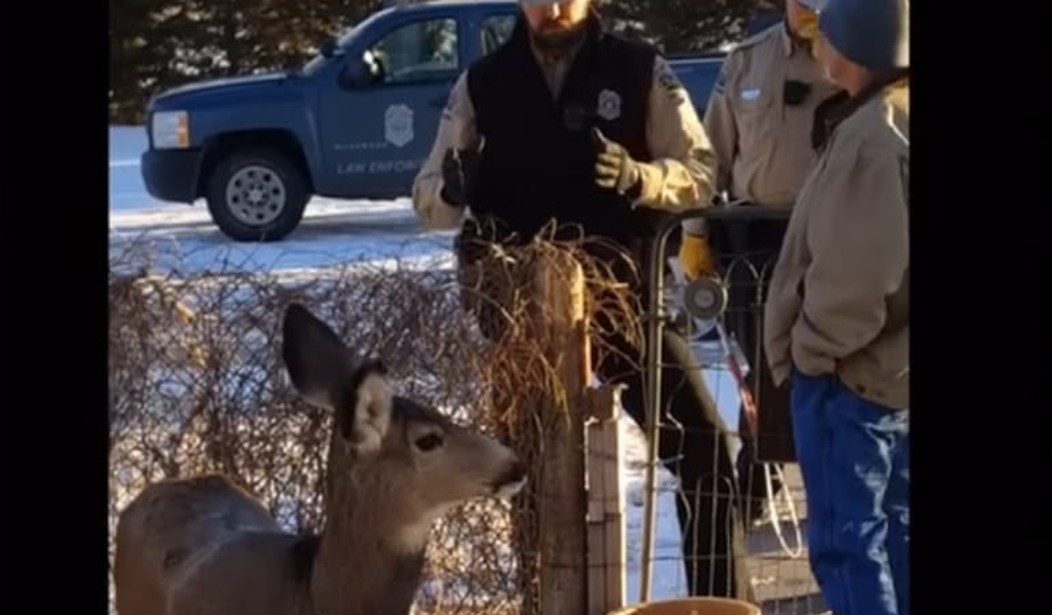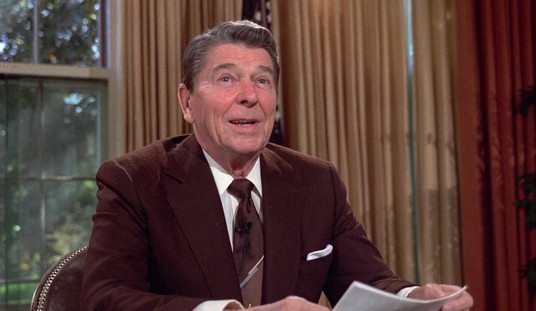A game warden’s shooting of a family’s pet deer has sparked outrage in western Kansas. The deer, named Faline, had been a member of the Mcgaughey family for almost two years when state wildlife officials started investigating the Ulysses, Kan., family and their pet.
“She was a very much a big pet. There was no reason for her to be killed,” Kim Mcgaughey told reporters. While it is illegal to keep a wild animal as a pet in Kansas, the family says the deer domesticated itself. “Her being domesticated was her own doing,” Mcgaughey said. “She chose to stay. I never kept her from going away and being with other deer.”
But state wildlife officials said something had to be done about the 2-year-old mule deer. The Mcgaughey’s claim that they asked if they could vaccinate Faline or give her to a zoo or sanctuary, but the game warden shot and killed her instead.
Mcgaughey, who has always had “a way with animals,” is devastated.
As a child she had a pet mouse she could walk on a leash, and her horses, dogs and cats were especially well trained, she said. A few times she’d mentioned to neighbors in Grant County she’d always wanted a pet deer. Her wish came true in March 2014 when she walked over to the house of some neighbors who’d been keeping a mule deer they’d found as a fawn the year before.
“It was an instant connection and she just followed me home, about four miles,” said Mcgaughey. “She’d bonded some with the other people but not like she did with me.”
Within a few weeks the mule deer, which they named Faline, after Bambi’s friend and future mate in the cartoon movie, “considered herself part of the family,” Mcgaughey said. The deer continually followed Mcgaughey in and out of their home 12 1/2 miles from town, and played with all members of the family and their pets.
Taryn Mcgaughey, Kim Mcgaughey’s daughter, has photos of her 8-year-old son playing with the deer, as well as the animal standing on the couch looking out the window or being hugged by family members. They say the deer never made a mess in their house, and would butt its head against a door, or bleat loudly, when it wanted to be let in.
More via The Stanly News and Press:
She put colorful knitted collars on the deer so that hunters would know not to shoot her. Taryn Mcgaughey, who said she believes Faline “thought she was a dog,” has photos and videos of the deer inside the home, standing on furniture and playing with her 8-year-old son.
“She was house-trained. She would come into the house behind me, sleep on the floor while I watched TV,” Kim Mcgaughey told the commission Thursday, describing how the deer would knock on the door with her head or bleat when she wanted inside. “I would answer her with a bleat back, because it sounded like she was hollering, ‘Mom.'”
Mcgaughey’s big mistake was posting about her pet deer on social media after it didn’t show up at her home for several days. On December 9 she asked in a Facebook post if anyone had seen the missing animal. Some goody-goody busybody saw the post and reported it to the Kansas Department of Wildlife, Parks and Tourism.
Mark Rankin, law enforcement assistant director for the wildlife department, said game wardens found Kim Mcgaughey at her workplace in Ulysses on the afternoon of Dec. 19 and issued her a ticket for “unlawful possession of wildlife without a permit.”
Three game wardens soon met at her house and determined it wouldn’t be safe to capture the deer. They couldn’t find a veterinarian to tranquilize the animal.
Rankin said there was also concern that the deer could be carrying chronic wasting disease, a fatal deer disease spreading through Kansas, so their options on moving the deer were limited. Live deer cannot be tested for the disease.
Rather than taking a chance the deer might not be there if the game wardens left and came back later, Rankin said game warden Tanner Dixson shot the animal near some trees on the Mcgaugheys’ property, at the edge of the driveway.
Taryn Mcgaughey shot video of the three game wardens following the deer around the yard, the driveway and eventually herding it toward where Dixson was waiting.
Kim Mcgaughey said the deer was dead within 45 minutes of the game wardens approaching her at work.
During that time, she said, she contacted three zoos to see if they would take the animal. She said one, the zoo in Hutchinson, was interested but the person she needed to talk to was gone for the day.
“After having her 22 months, they couldn’t even give us 12 hours to try to take her to a sanctuary,” said Taryn Mcgaughey. “They said they were worried about our safety, but cats and dogs carry more diseases than any deer ever would.”
Some within the state’s wildlife community agree. Others see nothing but danger in adopting wild animals as pets. Ron Klataske, Audubon of Kansas director, for instance, says the risks are actually quite minimal.
Giving the public a close-up look at a deer, coyote, squirrel or raccoon can spark interest in conservation. Many of history’s greatest conservationists, including Theodore Roosevelt, had wild animals as pets. Klataske said he had pet vultures, coyotes and other animals when he was growing up on a Kansas farm in the 1950s. He thinks he’s a better naturalist because of the experience.
Jim Mason, director of the Great Plains Nature Center in Wichita, on the other hand, says an animal as large as a deer can hurt humans.
In some cases, pet buck deer, charged by hormones during the annual breeding season, have gored people. Even females, Mason said, could eventually be dangerous.
“It would probably be like being pounded with a claw hammer,” he said of a doe slashing someone with its hooves. “People actually get killed by deer that were their little buddy only a week before.”
At least two people have been killed in Kansas by pet deer, according to the Kansas wildlife department.
The Kansas Department of Wildlife, Parks and Tourism released the following statement on Friday:
The incident involving the seizure and death of a pet wild deer near Ulysses on Dec. 19, 2016 was a regrettable and emotional situation both for the Mcgaughey family and the Kansas Department of Wildlife, Parks and Tourism officers involved, and we’re sorry it ended as it did.
Having to euthanize any animal is a difficult decision and is not made lightly. State law clearly prohibits keeping wild animals as pets, and the responding officers, after exploring other available alternatives, believed that seizing and euthanizing the deer was the only option. Moving the deer was not an option because of the potential to infect other captive or wild deer with chronic wasting disease, which would be catastrophic.
This entire incident is under internal review. We will review and update our policies, procedures and training to better equip our officers to handle these types of situations in the future.









Join the conversation as a VIP Member